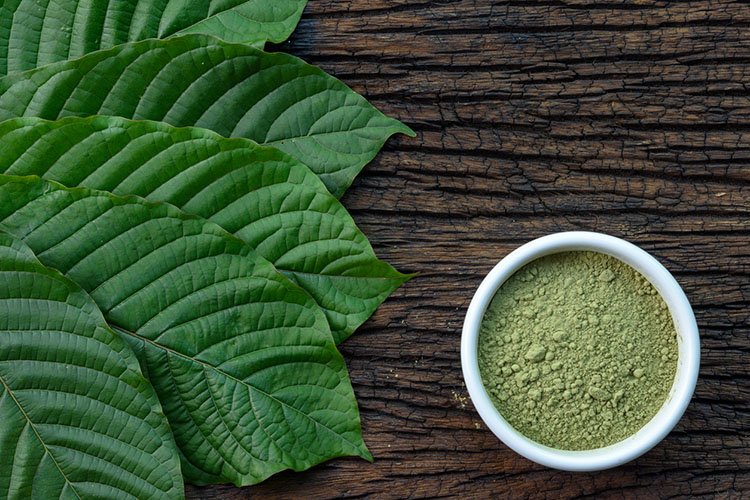
Mitragyna Speciosa or kratom, as many of you know it, is an evergreen plant that grows naturally in the marshy regions of countries like Thailand, Indonesia and Malaysia.
One of the reasons why a growing number of users are inclined to use kratom is because it is a natural energy booster. The fact that it belongs to the coffee family should explain this property. However, that’s just a tiny fragment of what this herb is capable of.
Traditionally, the natives of Southeast Asia would chew kratom leaves to stay productive and also manage conditions like pain, inflammation, anxiety, sleeping problems, etc.
Although many online accounts revolve around kratom’s potential for the management of opioid withdrawals, there is little to no clinical evidence supporting those claims.
How Did It Come Into Existence?
The practice of using kratom for its possible medicinal properties is supposed to be ancient. However, the exact date of the first usage remains largely unknown. The first solid evidence of kratom’s practical use dates back to the early 19th century.
In 1932, due to the growing enthusiasm for this natural herb, an active phytochemical mitragynine was isolated and tested on humans.
By 1960, over 20 other active alkaloids present in kratom leaves were isolated and studied. The first synthesis of 7-hydroxymitragynine (the primary active compound) happened in 1994.
But, kratom became a mainstream herb somewhere around the onset of the 21st century, thanks to the internet and online message boards that were being circulated around the world. That’s when it entered the US markets.
In August 2016, the DEA withdrew its ‘intent of notice’ which meant to put kratom in the schedule 1 controlled substances. Since then its popularity has spiked tremendously.
Medicinal Aspect of Kratom
A growing number of users find kratom helpful in pain management. Many would even use it for managing opioid withdrawal symptoms. In the USA and Europe, users can find kratom in various forms through Kratom Crazy – an online portal that sells high-quality kratom products.
With that said, let’s take a look at some of the potential medicinal properties of kratom one might explore.
Instant boost in energy
As mentioned earlier, kratom can be an excellent energy booster much like coffee. That’s probably why many people are choosing to go with kratom tea over a cup of joe first thing in the morning. Kratom is supposed to set into motion certain metabolic processes. Those processes contribute to a sudden surge of energy.
This property of kratom could offer a quick fix for those struggling with chronic fatigue syndrome and those who find it hard to stay productive throughout the day. When consumed in small doses on an empty stomach, kratom should help delay the exhaustion.
Potential to Manage Withdrawal Symptoms
Let it be known that there is no medical evidence supporting this claim. But, stories are floating around the internet about those who were able to manage uncomfortable opioid withdrawal symptoms with the help of kratom.
Check out this thread on WebMD listing those stories. This point could seem rather paradoxical since kratom works by binding itself with the same receptors in the brain as an opioid. However, somehow it’s not supposed to cause dependency. Many even find it a safe alternative to other harmful drugs including opium. More studies are needed to stipulate this claim.
Potential to Help With Stress and Anxiety
Certain kratom strains, especially the red-veined kind can have mildly relaxing effects when taken in the right dosage. Those who find it hard to keep their thoughts in check or suffer from ‘mental cloud’ could experience some degree of relief too. The top 5 strains of kratom for anxiety are Maeng Da, Malay, Bali, Indo and Borneo Kratom. Again, more research is needed in this context but there is one medical excerpt highlighting kratom’s potential in managing anxiety and other mental health issues.
Might Help To Manage Pain
This continues to be one of the most popular reasons behind kratom’s growing popularity even though it’s not part of the mainstream medical community. Countless people can swear by kratom’s major role in their life for effective pain management. Many people suffering from chronic pains found a great degree of comfort from kratom consumption. Although long-term implications and side-effects are largely unknown, it’s worth mentioning that this herbal supplement could help people with chronic pains and discomforts.
What Precautions to Follow
First off, it’s important to buy kratom product only from a reliable vendor after much consideration. Secondly, if you are under any medication or suffering from any condition, consult your physician before making kratom a part of your life.
As a safety measure, always start with low kratom dose. 1-2 grams are considered moderate doses while anything over 5 grams constitutes ‘a strong dose’. Also, be sure to find out about the kratom product type and the nature of strain that went into the making of the product. That will help set the expectations right.
If you notice dehydration or dry mouth, be sure to drink plenty of water. Possible side-effects could include dizziness, nausea, headache, constipation, diarrhea, etc. If any of those symptoms occur, wait for them to subdue in a couple of hours.
Final Thoughts
Kratom is definitely a revolutionary herb. Even though it has not been given a green light by the medical community, people around the globe are continuing to explore this herb for everything that it has to offer.
Under controlled usage and close monitoring, kratom could offer a host of health benefits.
Written by Angela
About the Author
Angela is an editorial assistant at Kratom Crazy, a premium supplier of kratom extracts that are sold for research and educational purposes. Being working as an editor, Angela is also responsible for studying kratom effects on various health issues. Connect with Kratom Crazy through Facebook and Twitter.
You may also like
The Natural Guide to Better Sleep
10 Best Sites to Buy Protein Supplements Online
Foods that Help Reduce Stress [Infographic]
